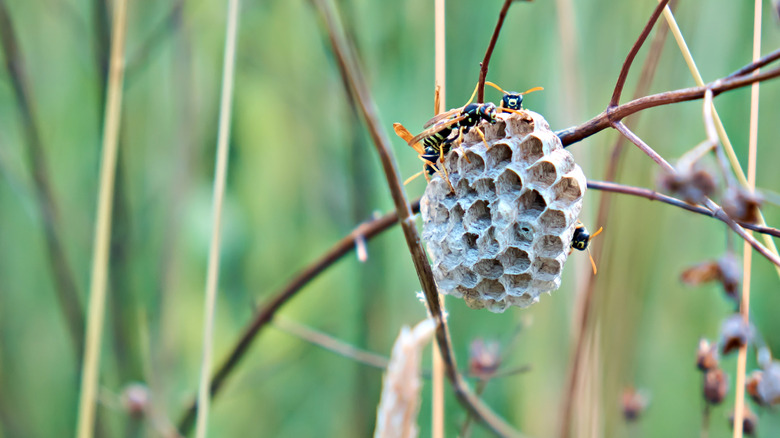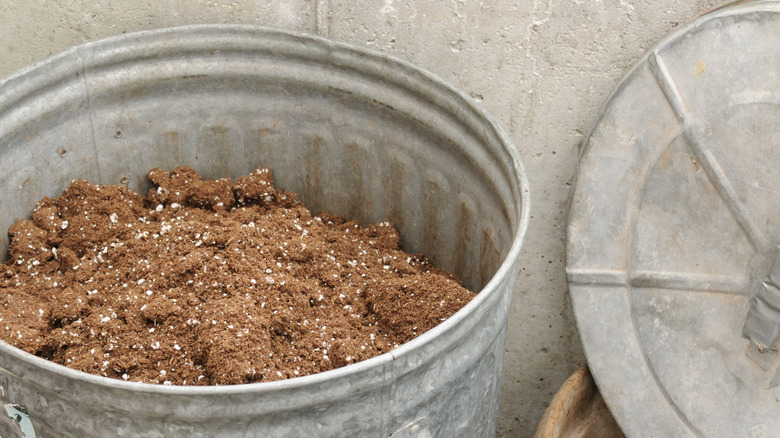The Garden Mistake That Could Bring Wasps To Your Home
The hotter the summer gets, the more wasps you will find in your garden. All you need is one careless move, and you can end up with a sting that burns. For some, it can even be life-threatening. Even if you think you have tried every trick in the book to prevent wasps from building nests near your home, you might be making a common garden mistake that could be attracting wasps. Ask yourself: Are you tossing old potting mix in a pile or uncovered bin near your house? Not throwing it away completely or storing it in a well-seal container is erroneous. The issue is not the potting mix or the soil but what it may contain and the shelter it provides.
More often than not, old potting mix is full of decomposing organic matter — think roots and parts from dead plants and unused fertilizer. It's the perfect nursery for bugs: fungus gnats and other flies, sowbugs, and all sorts of larvae. Guess who loves this? Wasps. Those little insects are the main source of food for solitary wasps and workers from social wasp colonies — think yellowjackets, paper wasps, and hornets. Regarding the former, some of these wasps, such as potter wasps, build their nests out of dirt and clay. And, depending on its condition, your open bag potting soil might serve as a makeshift bug hotel, ideal for underground nesting. In other words, if you don't rescue that moldy potting soil from its pile or open container, wasps will keep visiting your garden.
Preventing wasps through proper potting mix management
Ideally, simply throw away old potting mix at the end of each season. Or try out a few of the ways to reuse old potting soil instead of tossing it out, like mixing old soil with new, filling holes in your lawn, or amending sticky clay soil. If you hate the idea of wasting the dirt, there are some things you can do to keep wasps away. First, sterilize the soil in an oven or microwave. Most insects die above 160 degrees Fahrenheit. Bag it as soon as it's cool and place it in a bin with a tight-fitting lid, so that wasps (and other critters) can't access it. If you open and close the bins regularly, always tightly reseal them. Uncovered or overflowing bins of potting soil are a magnet for wasps.
What if your used potting mix is already infested with underground nesting wasps, like German yellowjackets? As a last resort, you could treat your soil pile with wasp spray or insecticide dust. First, however, you need to assess the risk to your safety. Some wasps are aggressive when disturbed and can dish out nasty stings. If you know you're allergic to wasp venom or the colony is large, call an exterminator. To tackle a small nest by yourself, wear a long-sleeved shirt and long pants with the cuffs taped close and a beekeeper's veil. Choose a time when wasps are less active, usually in the late evening or at night. Figure out the main entrance to the wasp nest — where most wasps are entering and exiting the potting mix — and apply the product. Cover the entrance with dirt and wait a few days for the colony to die.

